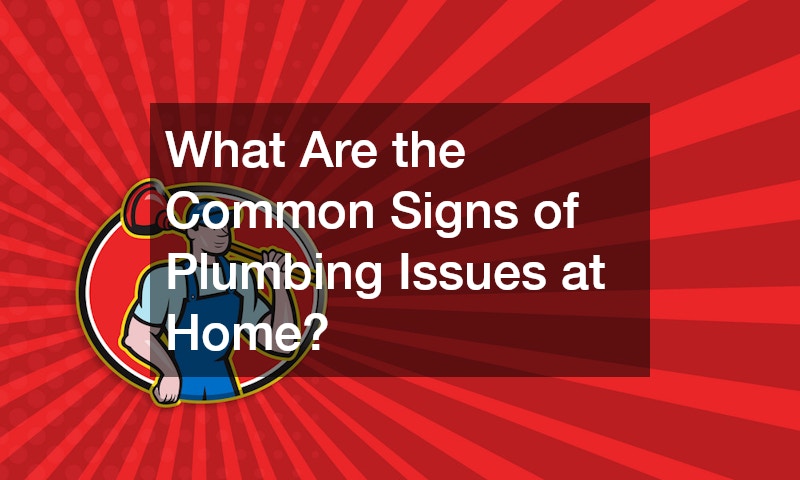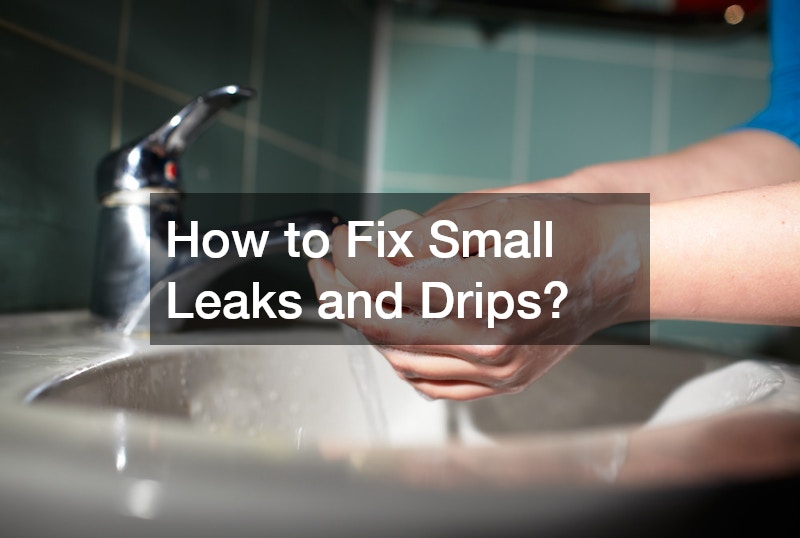

Welcome to the ultimate guide designed to help you tackle common water issues at home, from pesky leaks to water softening solutions. This guide will provide practical advice and insights into effectively managing plumbing issues at home to ensure a comfortable and safe living environment. Understanding the root causes of these issues and knowing how to address them can save you time, money, and stress in the long run.
What Are the Common Signs of Plumbing Issues at Home?

One of the first indicators of plumbing issues at home are water stains on ceilings and walls. These stains often appear as unsightly brown or yellow patches, suggesting a hidden leak above or inside the wall. Ignoring these stains can lead to significant damage and mold growth, making early detection crucial.
Unpleasant odors in certain areas of your home can also signal plumbing problems. These odors often arise from drain clogs, sewage leaks, or the accumulation of stagnant water, and can affect the air quality within your home. Identifying the source of such smells is essential, as they can pose health hazards if left unaddressed.
Another common sign of plumbing issues at home is fluctuating water pressure. If you notice that your showers are sometimes powerful and other times weak, it may indicate issues with your plumbing system. This inconsistency can be caused by leaks, blockages, or problems with your water supply.
How Can I Detect a Water Leak in My Home?
Detecting a water leak early can save you from extensive damage and costly repairs in your home. One effective way is to check your water meter, ensuring it corresponds with your water usage. If the meter shows usage while all water outlets are shut off, you may have a leak.
Listening for sounds of running water can also help you identify leaks. Even a faint sound can indicate a problem within your piping system. Pay close attention in quiet moments when you typically don’t use water; persistent sounds may lead you straight to the source of the issue.
Visually inspecting your home’s interior and exterior for signs of moisture damage can further aid in leak detection. Look for mold growth, peeling paint, or warped flooring in places where plumbing runs. The earlier you catch a leak, the easier and more cost-effective it will be to handle plumbing issues at home.
What Should I Do in Case of a Major Leak?
In the unfortunate event of a major leak, the first thing you should do is immediately shut off the water supply to your home. This rapid response can prevent extensive water damage and flooding, which can lead to costly repairs. Locate your main water shut-off valve and familiarize yourself with its location in case of emergencies.
Next, contacting a professional plumber is crucial. Leaks can often require specialized tools and expertise, so bringing in a local plumber can help you solve complex plumbing issues at home effectively. A skilled plumbing company can also assess other areas of your plumbing to detect any additional problems.
Documenting the damage for insurance claims is a vital step following a major leak. Take photographs of affected areas and keep records of any repair work done. Proper documentation helps expedite the claims process, ensuring you receive the financial support needed to recover from the incident.
How to Fix Small Leaks and Drips?

If you encounter small leaks and drips around your home, you may consider DIY pipe repair to save on costs. Using plumber’s tape and sealants can provide quick fixes for minor leaks in connections and fittings. It’s essential to ensure surfaces are clean and dry before applying tape or sealant for maximum effectiveness.
Replacing worn washers and O-rings is another simple yet effective method to address small leaks. These components wear out over time, leading to drips in faucets and fixtures. Keeping a set of replacements on hand can make quick repairs hassle-free, reducing water waste in your home.
Tightening loose fittings can also remedy minor leaks. It’s often as simple as using a wrench to secure connections on faucets, hoses, and pipes. Regular checks and a proactive approach can prevent plumbing issues at home from escalating into more significant problems.
What Are the Best Practices for Preventing Plumbing Problems?
Regular maintenance checks are the cornerstone of preventing plumbing issues at home. Schedule routine inspections by a plumbing or home remodeling company to catch potential problems before they become severe. Regular check-ups can include examining pipes, water heaters, and drainage systems.
Proper disposal of waste is another vital practice in maintaining a healthy plumbing system. Many homeowners overlook the importance of how they manage their waste disposal, leading to clogs and backups. Utilize trash bins for non-flushable items and educate family members on what can and cannot go down drains.
Monitoring water usage and pressure is also essential. If you notice significant spikes in your water bill, it may indicate a leak or inefficiency somewhere in your system. Consider installing a water pressure gauge to keep tabs on your plumbing health over time.
For homeowners who want to stay ahead of costly repairs, scheduling a whole house plumbing inspection is one of the smartest steps you can take. This thorough evaluation covers all major areas of your plumbing system, including water supply lines, drains, fixtures, and appliances. A professional plumber can identify small leaks, corrosion, or outdated components that might otherwise go unnoticed until they cause major damage. By conducting these inspections regularly, you ensure your plumbing system remains efficient, safe, and compliant with local codes.
Another helpful tool for proactive homeowners is a residential plumbing inspection checklist. Having a checklist allows you to monitor visible signs of plumbing wear and tear between professional visits. Items to include on this list might be checking for water stains, monitoring water pressure, inspecting exposed pipes for rust or leaks, and testing your water heater’s performance. With a clear checklist, you can quickly identify red flags before they escalate, making it easier to communicate with plumbers and prioritize repairs. This approach not only saves money but also provides peace of mind, knowing your home is safeguarded against hidden plumbing issues.
How to Identify and Remove Hard Water Issues?
Hard water issues can significantly impact the efficiency of your plumbing and appliances. Common signs of hard water in your home include scale buildup on faucets, cloudy glassware after washing, and dry skin or hair after showering. Recognizing these signs early can help you decide on water softening solutions to address the problem.
Testing your water’s hardness is a straightforward process, and you can purchase testing kits at most home improvement stores. These kits allow you to measure magnesium, calcium, and other minerals that contribute to hard water. The results will guide you in determining how to proceed with softening your water.
When selecting methods for softening hard water, you have several options. Water softener services often involve ion-exchange systems, which replace hard minerals with sodium. Additionally, you may consider magnetic or electronic descalers, although their effectiveness can vary based on water chemistry.
What Are the Benefits of Soft Water?

Soft water offers numerous benefits for your health and home. One significant advantage is improved skin and hair health, which is particularly noticeable for those who suffer from dry skin conditions. The absence of harsh minerals in soft water helps maintain moisture, leaving skin feeling hydrated and hair shinier.
Another notable benefit of soft water is the increased lifespan of appliances, particularly your water-using appliances like dishwashers, washing machines, and hot water heaters. By reducing mineral buildup, soft water helps appliances function more efficiently, possibly leading to lower energy bills. Regular maintenance and soft water can keep your appliances running smoothly for years and prevent costly repairs such as hot water heater repair.
Furthermore, soft water reduces soap and detergent usage significantly. With fewer minerals present, users can achieve the same cleaning efficiency with less product. This not only saves money but also leads to a decreased environmental impact as fewer chemicals and detergents enter the water system.
How to Choose the Right Water Softener for Your Home?
Choosing the right water softener for your home begins by evaluating your water hardness level coming from your well pump. Understanding the extent of hardness in your water will help you determine the capacity and type of system you’ll need. Consult your water utility or utilize a home testing kit for accurate readings.
Comparing different types of water softeners is crucial to making an informed decision. Salt-based systems are popular for their effectiveness, but salt-free alternatives are also available for those seeking a more environmentally friendly approach. Weigh the pros and cons of each type to find a solution that fits your home needs.
Considering your household size and usage is also essential in your decision-making process. Larger households require more capacity and potentially higher efficiency to meet water demands. Factor in your peak usage times and install a system that accommodates your lifestyle seamlessly.
What Are Common Plumbing Issues Related to Toilets?
Toilets are a common source of plumbing issues at home, and one of the most frequent issues homeowners encounter is a running toilet. A running toilet is not only annoying due to the constant sound of running water, but it can also waste a significant amount of water, leading to a higher water bill. The good news is that running toilets often require simple repairs that can be carried out by homeowners, a plumber, or general contractors. The most common culprits behind a running toilet are a worn-out flapper or an improperly adjusted float. The flapper is the rubber seal at the bottom of the tank that controls the flow of water into the bowl. Over time, the flapper can become brittle or warped, allowing water to leak continuously. The float, on the other hand, regulates the water level in the tank. If the float is set too high, water will constantly overflow into the overflow tube, resulting in a running toilet. Regular checks of your toilet tank and its components can help catch these issues before they escalate and lead to significant water waste.
Another frequent concern with toilets is clogged toilets, which can range from a minor inconvenience to a major emergency, depending on the severity of the clog. Clogs can be caused by a variety of things, including flushing too much toilet paper, flushing non-flushable items, or a buildup of mineral deposits in the pipes. If a plunger doesn’t resolve the issue, a plumbing snake, also known as an auger, can be used to remove deeper blockages. The plumbing snake is a flexible tool that can be inserted into the toilet drain to reach and dislodge the clog. However, if the clog is severe or you are uncomfortable using a plumbing snake, it’s best to call a professional plumber to avoid causing further damage to the toilet or pipes. Regular maintenance and being mindful of what you flush can help prevent these clogs from occurring in the first place.
Leaks at the base of the toilet are also a common plumbing issue that should not be overlooked. These leaks can be caused by a deteriorated wax ring, loose bolts, or a cracked toilet base. The wax ring is a seal that sits between the toilet and the drainpipe, preventing water from leaking out. Over time, the wax ring can dry out, crack, or become dislodged, leading to leaks. Loose bolts that secure the toilet to the floor can also cause leaks, as can a cracked toilet base. Leaks at the base of the toilet can cause water damage to the floor and surrounding areas, and can also lead to mold growth if left unchecked. Therefore, it’s crucial to address these leaks promptly through a water extraction company. In most cases, fixing a leak at the base of the toilet involves replacing the wax ring, tightening the bolts, or, in the case of a cracked toilet base, replacing the entire toilet.
Additional toilet plumbing issues can also arise, such as a malfunctioning fill valve, a broken toilet handle, or a clogged overflow tube. The fill valve controls the flow of water into the tank after each flush. If the fill valve is not working properly, the tank may not fill up completely or may overfill, leading to a running toilet. A broken toilet handle can make it difficult or impossible to flush the toilet, while a clogged overflow tube can cause water to overflow from the tank. These issues may require replacing the fill valve, toilet handle, or clearing the overflow tube.
Overall, regular maintenance and prompt attention to any signs of trouble can help prevent major toilet plumbing issues and keep your bathroom in good working order.
How to Maintain Your Home’s Plumbing System?

Maintaining your home’s plumbing system requires performing regular check-ups on all piping and fixtures. Schedule annual inspections with a local plumber to ensure that everything is functioning correctly and to catch potential issues early. Keeping up with these inspections can prevent small problems from turning into significant inconveniences.
Winterizing your plumbing can help protect your system from freezing and bursting, especially in colder climates. This process includes insulating exposed pipes and shutting off the water supply to outdoor faucets. Taking these steps seriously can save you money in the long run by avoiding costly disaster repairs.
Utilizing preventive drain care products can keep your plumbing clear and functional. Regularly using enzyme-based cleaners can help maintain flow in your drains while being environmentally friendly. Incorporating these practices into your routine can help alleviate plumbing issues at home and create a smoother overall experience.
Addressing water issues at home can seem daunting, but with the right knowledge and tools, you can effectively manage and resolve plumbing issues yourself. From detecting leaks to maintaining a soft water environment, this guide empowers you to create a more efficient and comfortable home. Remember, proactive maintenance and understanding the symptoms of plumbing issues can lead to a safer and more pleasant living space.

